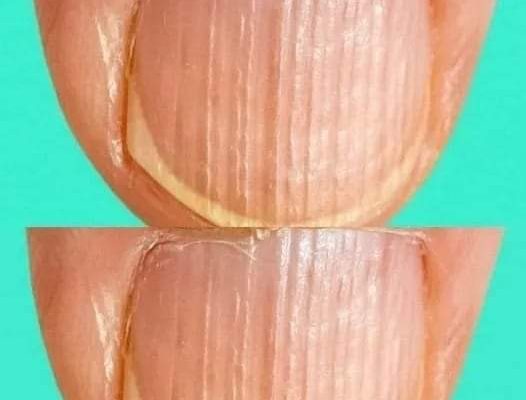Manicures may cover up any ripples or bumps on your nails, but shiny polish can’t hide potential health problems lurking beneath the surface. In fact, your nails can be a mirror reflecting the state of your overall health. Unusual changes in your nails can sometimes indicate issues with your liver, lungs, heart, or even signal nutrient deficiencies.
In this article, we’ll dive into the different types of stripes that can appear on your nails, what they might indicate, and when it’s time to consult a healthcare professional.

How Nails Reflect Health
Your nails can reveal a lot about what’s going on inside your body. Changes in texture, color, or patterns may be linked to health conditions or simply reflect the natural aging process. While not every change is a cause for concern, it’s essential to know when these signs could be pointing to something more serious.
According to the National Library of Medicine (NCBI), certain nail stripes can serve as red flags for systemic health issues. Let’s explore what different types of nail stripes might mean.
1. Vertical Stripes
Vertical stripes, also known as longitudinal striations, are quite common and usually run from the base of the nail to the tip. These ridges are often associated with aging, and in most cases, they’re harmless. As we get older, our nails naturally develop these ridges.
However, if vertical stripes suddenly appear or become more pronounced, they could indicate nutritional deficiencies. A lack of key nutrients like vitamin B12, magnesium, or iron might be at play. If you notice other symptoms like fatigue or hair loss, it may be worth getting your iron levels or thyroid function checked.
Key Takeaway: Vertical stripes are usually harmless but can sometimes point to deficiencies or thyroid issues, especially if they appear suddenly.
2. Horizontal Stripes
Horizontal stripes, or Beau’s lines, are indentations that run across the nail. Unlike vertical ridges, these lines can indicate more specific health concerns. Horizontal grooves may appear due to physical trauma to the nail or result from more severe medical conditions like uncontrolled diabetes, heart attacks, or severe respiratory illnesses.
These lines often appear after a period of intense stress or illness, when the body temporarily halts nail growth to prioritize healing. The NCBI notes that if these grooves develop abruptly, it may signal a sudden health crisis. If they appear on all of your nails, it might indicate systemic conditions such as pneumonia, mumps, Kawasaki disease, or even coronary thrombosis.
Key Takeaway: Horizontal stripes can suggest significant health issues and should be checked if they appear suddenly, especially across multiple nails.
3. White Stripes
White, horizontal lines that don’t cause indentations in the nail surface are known as Muehrcke’s lines. These lines can point to issues with liver or kidney function and are often linked to a drop in blood protein levels, especially albumin. Malnutrition or chronic liver disease can also cause these lines to appear.
A key feature of Muehrcke’s lines is that they fade temporarily when pressure is applied to the nail. If you notice white lines appearing on multiple nails, it’s a good idea to consult with a healthcare professional, as it could indicate liver or kidney problems.
Key Takeaway: White stripes may indicate protein deficiencies or liver/kidney issues and should be evaluated by a doctor.
The Role of Diet in Nail Health
For most people, minor ridges or ripples in the nails are normal and can often be improved with better nutrition and lifestyle changes. A well-balanced diet rich in proteins, vitamins, and minerals—such as biotin, vitamin E, iron, and zinc—can help improve the strength and appearance of your nails.
Dr. Sara Norris, a naturopathic doctor in Los Angeles, emphasizes that “nail health is most often an indicator of poor nutritional intake or poor digestion.” According to her, brittle, weak, or peeling nails are usually linked to a lack of nutrients rather than systemic diseases.
Key Takeaway: Improving your diet can often resolve minor nail issues. Focus on a nutrient-rich diet to support nail health.
When to Seek Medical Advice
While most nail changes are harmless and related to aging or minor deficiencies, there are times when they warrant a closer look. If you notice sudden changes in your nails, such as deep grooves, unusual color changes, or lines appearing on multiple nails, it’s best to consult a healthcare professional. These could be early signs of more serious health conditions.
Conclusion Your nails are more than just a cosmetic feature—they can offer valuable clues about your health. Paying attention to changes in your nails, from stripes to color shifts, can help you catch potential health issues early. While most nail abnormalities are easily treatable with lifestyle changes, some may signal a need for medical intervention.
Remember, if you’re concerned about your nails, don’t hesitate to reach out to a doctor for a thorough evaluation. Your nails might just be telling you something important about your health.



